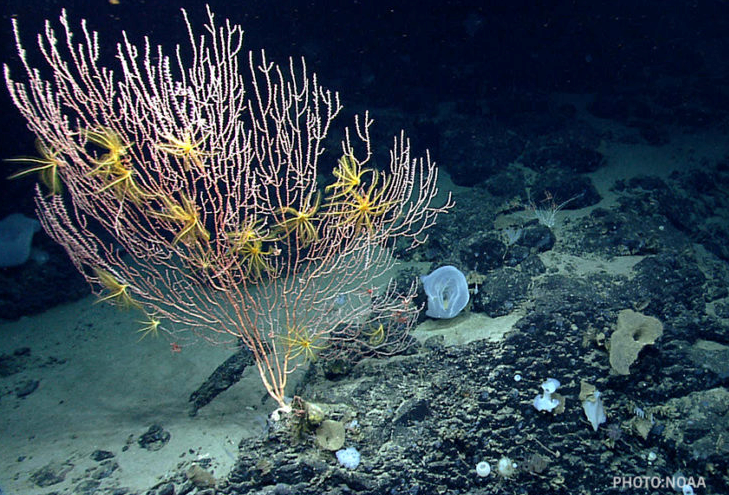By BERL HARTMAN
 How can we help ensure
that our New England ocean economy continues to thrive? The answer: maximize
protection for biological hot spots that nurture vulnerable populations of fish
and other sea life. That’s exactly why our country created undersea monuments.
How can we help ensure
that our New England ocean economy continues to thrive? The answer: maximize
protection for biological hot spots that nurture vulnerable populations of fish
and other sea life. That’s exactly why our country created undersea monuments.
However, it’s not clear
that everyone got the message. Interior Secretary Ryan Zinke visited New
England last week as part of his review of more than two dozen national
monument designations.
The Trump administration
apparently plans to scale back or even revoke federal monument protections for
some of our nation’s most treasured lands and ocean areas. One monument in the
cross hairs is the Northeast Canyons and Seamounts —
the first marine national monument off the Atlantic Coast.
There are countless,
well-documented scientific reasons for protecting these treasures. But there’s
another motivation for New England, and the United States, to preserve this
marine monument: economics.
For an administration that prides itself on viewing policy through the lens of business, unraveling protections for the Canyons and Seamounts would be an unsound move.
This ecologically rich
ocean area, about 150 miles off Cape Cod, has five undersea canyons and four
dramatic submarine mountains. It is habitat to more than 1,000 species,
including endangered sperm whales and Atlantic puffins.
It’s also replete with corals, some of which are more than a thousand years old and reach the height of small trees. Scientists who have investigated the area say these coral formations and marine species are unique and extraordinary to behold. They are straight out of Dr. Seuss.
It’s also replete with corals, some of which are more than a thousand years old and reach the height of small trees. Scientists who have investigated the area say these coral formations and marine species are unique and extraordinary to behold. They are straight out of Dr. Seuss.
On behalf of the
national nonpartisan business group Environmental Entrepreneurs (E2), I can
attest that America’s oceans are a highly valuable economic resource.
Preserving a healthy ocean, with abundant populations of fish and other sea
creatures, yields tremendous benefits for the region’s economy.
New England’s ocean
economy supports more than 230,000 jobs. It brings in $16 billion to the region
— much of it from tourism and recreation. Whale watching in New England is big
business, with nearly 1 million watchers in 2008. Seabird watching is also
popular. Recreational fishermen visit the closer canyons for marlin, tuna and
other game fish.
As climate change
threatens fish, shellfish and marine mammals elsewhere, protected canyons and
seamounts serve as a refuge and nursery for at-risk marine life. Protecting
these ocean wildernesses also can help fish populations. Studies show that
fisheries adjacent to marine protected areas have seen spillover benefits over
time.
As ocean resources are
compromised, so too are the industries that depend on healthy and abundant fish
and marine wildlife, including tourism, recreation and commercial fishing. In
the Northeast, these sectors contribute billions of dollars annually to the
gross domestic product.
To protect the
outstanding ecological treasures in the Northeast Canyons and Seamounts Marine
National Monument is to support healthy and abundant fish and marine wildlife.
And that benefits the regional economy — and the hundreds of thousands of jobs
Berl Hartman is a
founding director of the New England Chapter of
Environmental Entrepreneurs (E2).